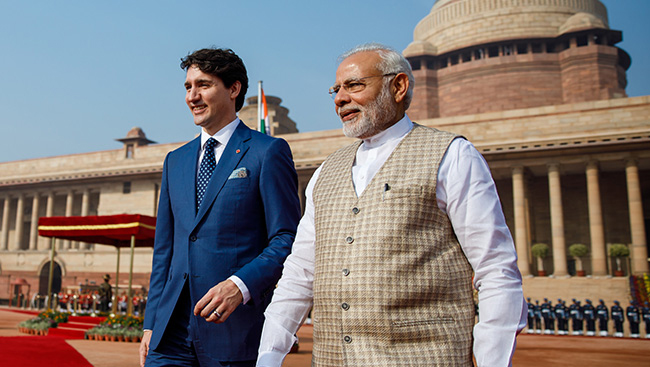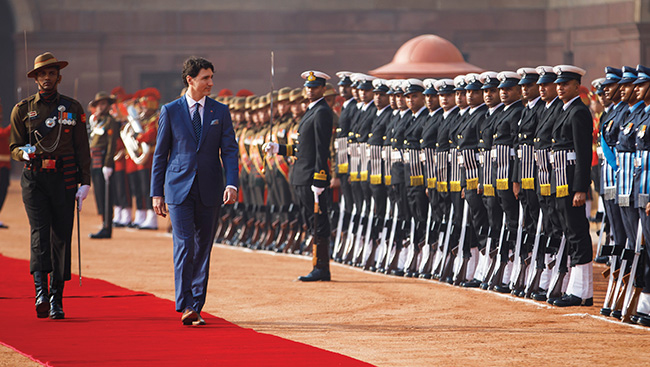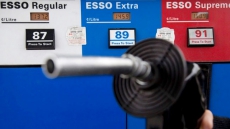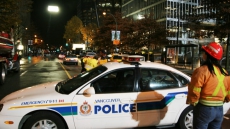Taking A Closer Look at the Prime Minister’s Trip to India!
A few weeks ago Indian media had a new story to feed on – that of Canadian Prime Minister Justin Trudeau’s first visit to India with his family and team from February 17 to 23, 2018. The Canadian delegation comprised of four Cabinet Ministers of Indian decent – Defence Minister Harjit Sajjan, Minister Navdeep Bains, Minister of Innovation, Science and Economic Development; Minister Amarjeet Sohi, Minister of Infrastructure and Communities; and Minister Bardish Chagger, Minister of Small Business and Tourism; along with other officials. Trudeau’s troop were excited about the trip which would further enrich Canada and India’s relationship. Little did they know that not only would the visit be memorable for both countries but it would also leave a bitter aftertaste for Trudeau.
Let’s begin by understanding the purpose of Canadian Prime Minister’s visit to India. The official statement from the Prime Minister’s office (PMO) said that during the visit, “Prime Minister Trudeau and Indian Prime Minister Narendra Modi will reaffirm the close friendship between our two countries, and discuss ways to create good middle class jobs for Canadians and Indians alike.” It also included the former’s participation in several business roundtables to promote further trade and investment between Canada and India; working closely with Indian leaders to advance mutual growth and prosperity; interacting with students; and visiting several landmarks.

Not much of a welcome?
Indians are known for their hospitality. The ancient Sanskrit saying, “Atithi Devo Bhava,” meaning a guest is akin to god, is highly believed and practised among Indians. Yet the welcome PM Trudeau and his family received on arrival to India wasn’t at par to the Sanskrit phrase. To begin with, the Indian Prime Minister wasn’t present to welcome the Canadian delegation. Modi who has previously broken protocol to greet country leaders on arrival was campaigning for a state election in the south. Trudeau was welcomed by junior Minister of State for Agriculture and Farmer’s Welfare, Gajendra Shekhawat. This came as a surprise to many as not even India’s Foreign Minister was present to meet Trudeau and his group on arrival. However, it should be noted that when Modi visited Canada in 2015, he was also not received at the airport by the Canadian Prime Minister. So the Indian PM did not break any protocol by refusing to receive the Canadian leader.

Though Trudeau put on a happy face showcasing that it was not an issue, Indian media was quick to point out that the welcome was undignified and unfit for the leader of a powerful country. This allegation was further confirmed when tech-savvy Modi did not tweet about Trudeau’s visit to India. Speculations began that it was a lukewarm reception; Canadian media also picked up this story, questioning whether Trudeau was ‘snubbed’ by the Indian government. This cold response has been attributed to Trudeau and his government’s support to pro-Khalistan (an independent Sikh nation) supporters among the Sikhs in Canada. Providing a possible explanation to this snub, Shinder Purewal, an ex-citizenship judge of British Columbia (BC) and Yukon region and professor at Kwantlen Polytechnic University, says, “For the present BJP government, India’s security has become a key issue of building relations with other nations. Canada’s current Prime Minister has not understood the seriousness of Khalistani or other security threats to India. He casually compares Sikh secessionism to Quebec’s role in Canada.”

Too much or too little
Like most official tours, Trudeau’s schedule in India allocated time for visits to some monumental sites in the country. Among other significant places, the PM and his family visited the Taj Mahal in Agra, Amritsar’s Golden Temple, and Mahatma Gandhi’s Sabramati Ashram in Gujarat. Dressed in colourful, traditional Indian attire, the Canadian family made a pretty picture throughout the tour. The jewellery and outfits were made by a Toronto designer, Kim Smiley, who works with Syrian newcomers. Canada’s first family put in a sincere effort to show their respect and appreciation towards Indian culture and customs. Though at first, this cultural effort was lauded by Indians, it eventually turned into annoyance. People blamed Trudeau for being ‘overdressed’ or trying to ‘blend in.’ The irony of it all was that at a meet and greet with Hindi film fraternity, Trudeau and family came dressed in Indian outfits while Bollywood celebrities ditched the traditional wear for the formal suit and tie or casuals. The contrast was so evident that it went viral on social media.

On the other hand, Canadian PM’s scheduling was criticized for including only half-a-day of official state engagements in New Delhi and utilizing the rest for “photo opportunities.” “The objective of the Canadian government was neither trade nor strategic-political dialogue. It was reflected in scheduling not more than half a day’s worth of official meetings for a week long visit,” states Purewal. Besides his official engagements, Trudeau did give enough time to connect with Indian media, business and social organizations and leaders, and educational institutions.

Major deal breakers
In India, months before his arrival, Punjab’s Chief Minister, Amarinder Singh, publicly accused members of Justin Trudeau’s cabinet of being connected to the Sikh separatist movement. When in India, Trudeau’s team announced that he would not meet with the Punjab CM because of his previous comments. However, Trudeau had a change of heart and decided to meet Amarinder Singh. Reports say that this decision was made on the request of Minister Sajjan. Trudeau met the Punjab CM on February 21; Minister Sajjan and Punjab minister Navjot Singh Sidhu were also present at the meeting. The two exchanged views on a range of issues, including youth employment and investment towards mutual prosperity.

Just when it seemed that Trudeau had won everyone with his charm and support, a major disaster took place. Jaspal Atwal, a convicted BC gunman, was invited to a reception for Prime Minister Justin Trudeau at Canada’s High Commission in New Delhi. Atwal was convicted of attempting to kill Indian cabinet minister Malkiat Singh Sidhu on Vancouver Island in 1986. He was also charged, but not convicted, in connection with a 1985 attack on former BC Premier Ujjal Dosanjh. This did not sit well with Indian and Canadian media who repeatedly questioned Trudeau’s government on this blunder. Atwal was added to the guest list by BC MP Randeep Sarai, who later claimed responsibly for the action and apologized. A few weeks later, MP Sarai resigned as chair of his party’s Pacific Caucus. Trudeau’s office stated the invitation was a mistake and it has been withdrawn. Fabian Dawson, a veteran award-winning journalist, filmmaker and author, points out an interesting element of this episode. “The South Asian community is a strong supporter of the Liberals. The Jaspal Atwal incident was the central controversy in the trip and it was self-inflicted. There are some who say it was orchestrated to drive home the message that India isn’t happy about the Liberals cozying up to who they see as potential threats.” This major error left a negative mark and overshadowed all the positive outcomes of Trudeau’s visit.

Strengthening India-Canada relationship
PM Trudeau’s visit, however, had positive and constructive results as well. In the short period of his time in India, he managed to discuss and create a dialogue about issues concerning both countries and offered help to Indian initiatives. While meeting with business leaders in Mumbai, the Prime Minister welcomed more than $1 billion in investments between Canadian and Indian companies, which will lead to the creation of more than 5,800 good, well-paying middle class jobs for Canadians. On the last day of his trip, February 22, he met with the PM Modi, who greeted him with his famous hug. They announced a wide range of new initiatives and agreements between both countries that span education, security, sustainable development, trade and investment, and women’s health and empowerment. Both country leaders also released a Joint Statement that outlines the way forward for the Canada-India relationship and how they will invest in mutual growth, achieve gender equality, and empower women. Canada and India signed six memoranda of understanding which will increase Canada’s cooperation in areas such as education, sport, intellectual property, information and communication technology, as well as science and innovation. In addition, 20 new or enhanced initiatives were launched, including projects to support education, women’s empowerment and health, and research to clean polluted waters. Manjot Hallen, president of the Liberal Party of Canada (BC), who was in India for the duration of Justin Trudeau’s visit said that the relationship between both countries is now deeper and more robust than ever before. “I’m glad to see continued cooperation between Canada and India to keep strengthening cultural and economic ties, build a more peaceful and secure world, and work together on climate change, oceans, space, and clean energy. I am certain that increased cooperation in these priority areas will help grow Canada’s economy and strengthen our middle class.”

The aftermath
Upon Trudeau’s return to Canada, a conspiracy story began circulating that the Indian government tried to sabotage Canadian PM’s trip by approving a visa to Atwal. PM Trudeau did not exactly refute this story stating, “When one of our top diplomats and security officials says something to Canadians it’s because they know it to be true.” Unhappy with Trudeau’s stand on this theory, Andrew Scheer, leader of the Conservative Party, tweeted, “Justin Trudeau confirmed that he believes the Government of India attempted to sabotage Canada’s reputation on the world stage. It’s irresponsible for him to make such an accusation without any proof. Justin Trudeau must explain the facts behind his conspiracy theory.” Calling these reports “baseless and unacceptable,” India’s Ministry of External Affairs gave a statement saying “the Government of India, including the security agencies, had nothing to do with the presence of Jaspal Atwal at the event hosted by the Canadian High Commissioner in Mumbai or the invitation issued to him for the Canadian High Commissioner's reception in New Delhi.” Talking about the Atwal incident, radio broadcaster Harjinder Thind says, “As far as the guest list is concerned, it is prepared by the Canadian authorities. You can’t blame the Indian government for that.” Purewal further remarks, “The only thing worst than inviting Jaspal Atwal on official tour was attempts by Trudeau government officials to invent a conspiracy theory that the Khalistani protagonist was planted in the delegation by India. Indian officials were perhaps more furious at this suggestion than the inclusion of this controversial man in formal and informal events because, after all, India had removed him from a ‘black-list’ of terrorists not allowed to visit India sometimes back.” A twist in this story is that in a previous interview with The Canadian Press, Atwal said he received an invitation directly from the Canadian ambassador's office. He also publicly apologized in Canada for the embarrassment the issue might have caused both countries. He mentioned that he has travelled to India a few times in the last few years, on visas provided by the Indian government.

The damage done on this trip is irreversible and can even cause Trudeau his seat at the 2019 election. India’s cold shoulder to the Canadian delegation raises many questions on the purpose of the trip. “The signs of this trip becoming a debacle were evident especially with the Khalistan issue and Punjab CM Amarinder Singh saying he won’t meet with Trudeau’s ministers. Trudeau may have public charm but playing Mr. Dressup in India with your family doesn’t equate to statesmanship. It’s not clear why this trip had to be done now amidst heightened tensions. What’s clear is that there was a lack of enthusiasm to this visit from the Indian side to the visit,” points out Dawson, who believes it will however not harm relations between India and Canada in the long run. “But it will be a subject of ridicule. Given the events, I would say this trip wasn’t as much about Trudeau’s passage to India it was about India’s message to Trudeau.” Sharing his views on the trip, community-oriented business owner Barj Dhahan, says “the PM Trudeau visit was more show than substance. Colourful to say the least. It’s unfortunate that the Jaspal Atwal affair overshadowed some good meetings and agreements that took place. I think much more could have been achieved had there been a much clearer purpose for the week long visit.”

Reports also suggest that Trudeau’s eight-day trip was a carefully planned move to win precious votes of the South Asian community at the 2019 Canadian federal election. “If an official visit had no trade, strategic or political agenda, then the only warranted conclusion is that the visit was a pre-election campaign for the Liberal Party. As they say, the politicians are clever by half; the benefits of this visit to campaign are not clear. The damage, however, at this moment, is very clear even to non-political types,” adds Purewal. Dawson agrees, adding that “it’s not the Liberals alone who cash in on this. All parties do.” Thind, however, adds in that this trip will not be a deciding factor on votes from Indo-Canadians. “Indo-Canadian voters are very conscious and selective. One incident or just the India trip is not going to make the decision on whom they are going to vote for. There are many other factors, like his economic policies, immigration policies and more important factors, for voters of Indo-Canadian origin to make a decision in the next election.” With a strong contender like NDP’s Jagmeet Singh opposite him, Trudeau has to up his game to ensure he gets the desired votes, especially from Indo-Canadians. Would the trip still have happened if Jagmeet Singh was not standing against Trudeau in the leadership race? Will this trip damage the PM’s stand in the election? Will it ruin India-Canada relationship in the long-run? These are questions one needs to keep an eye on in the coming months.





